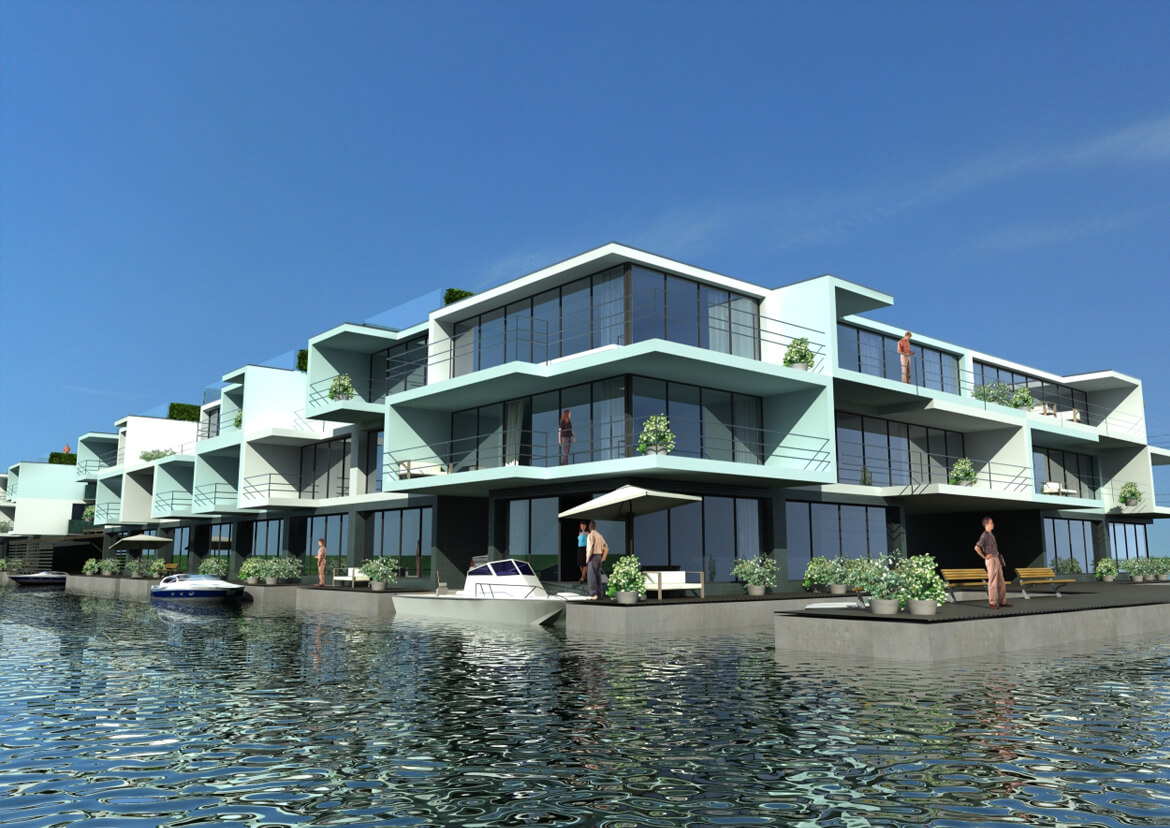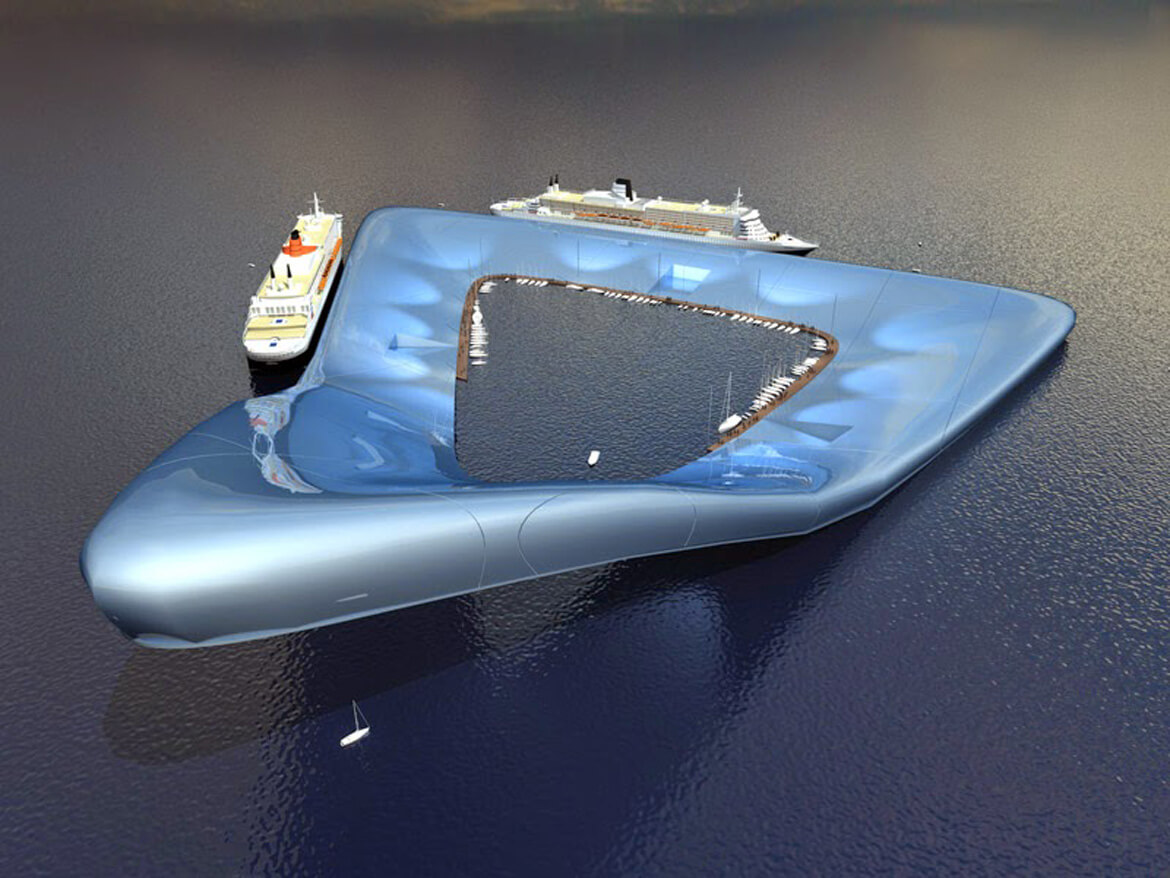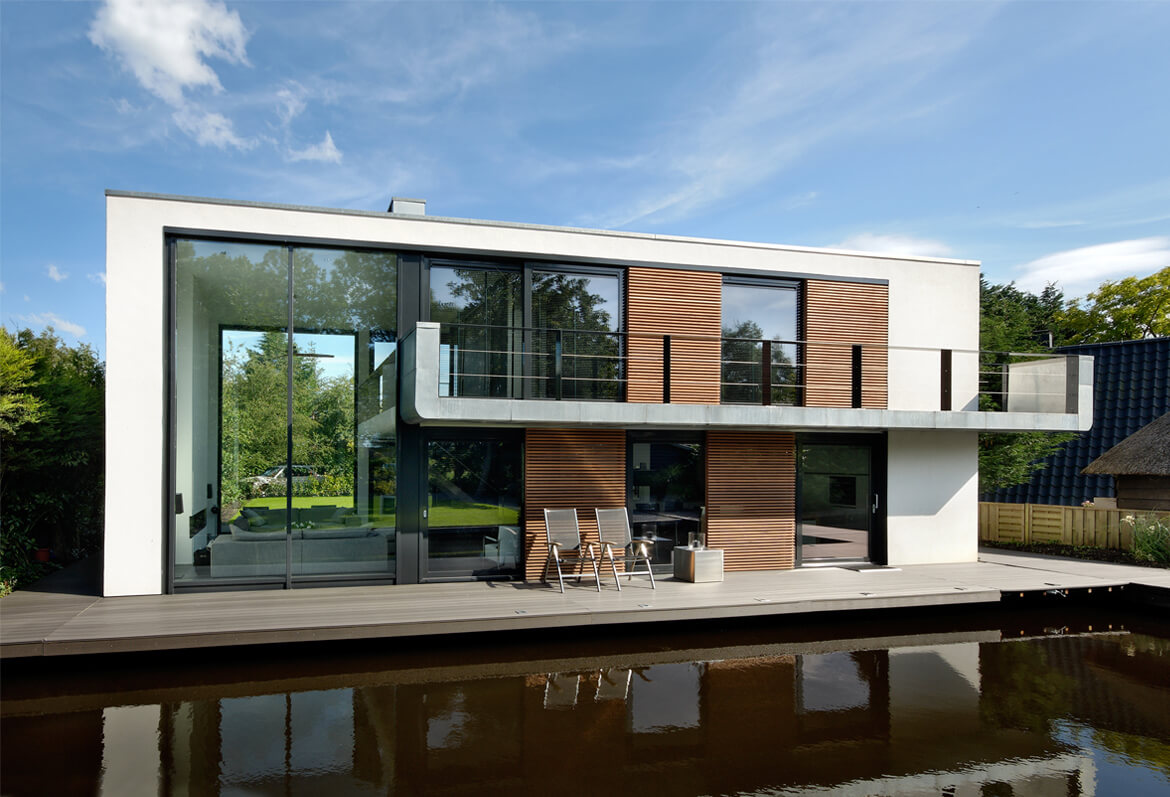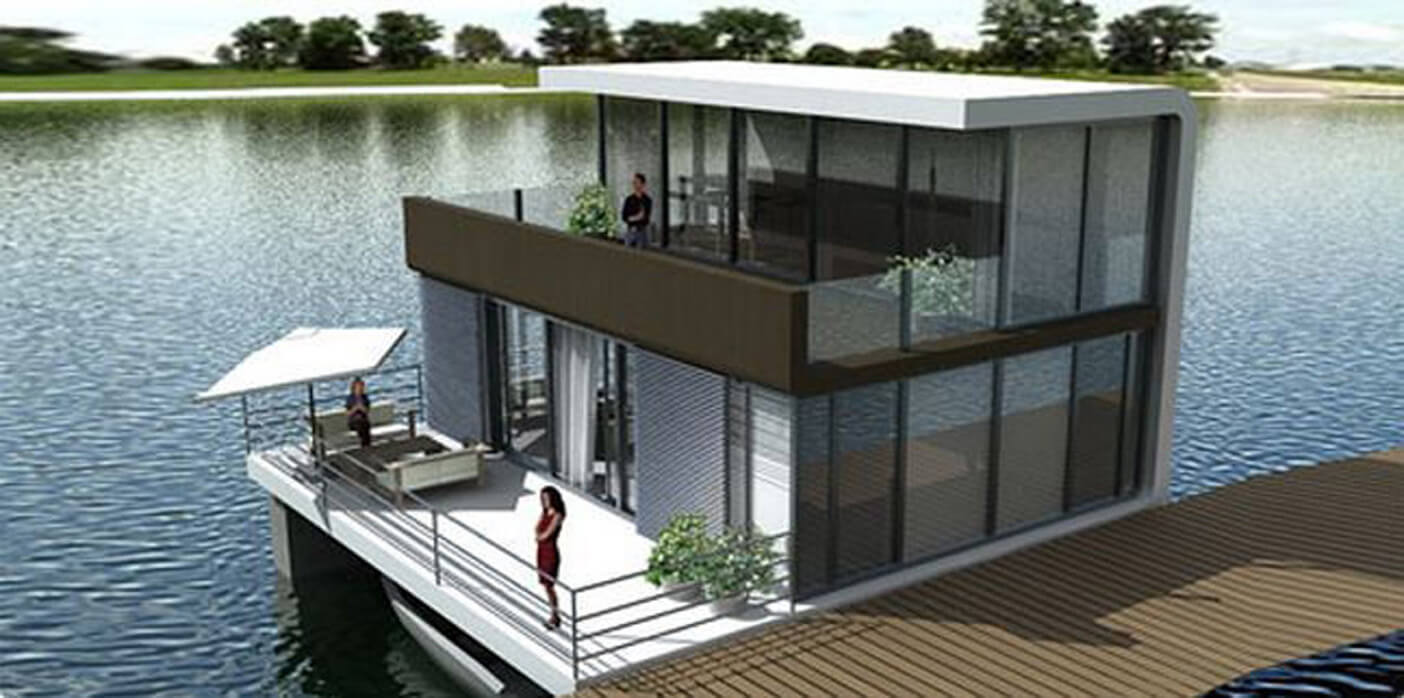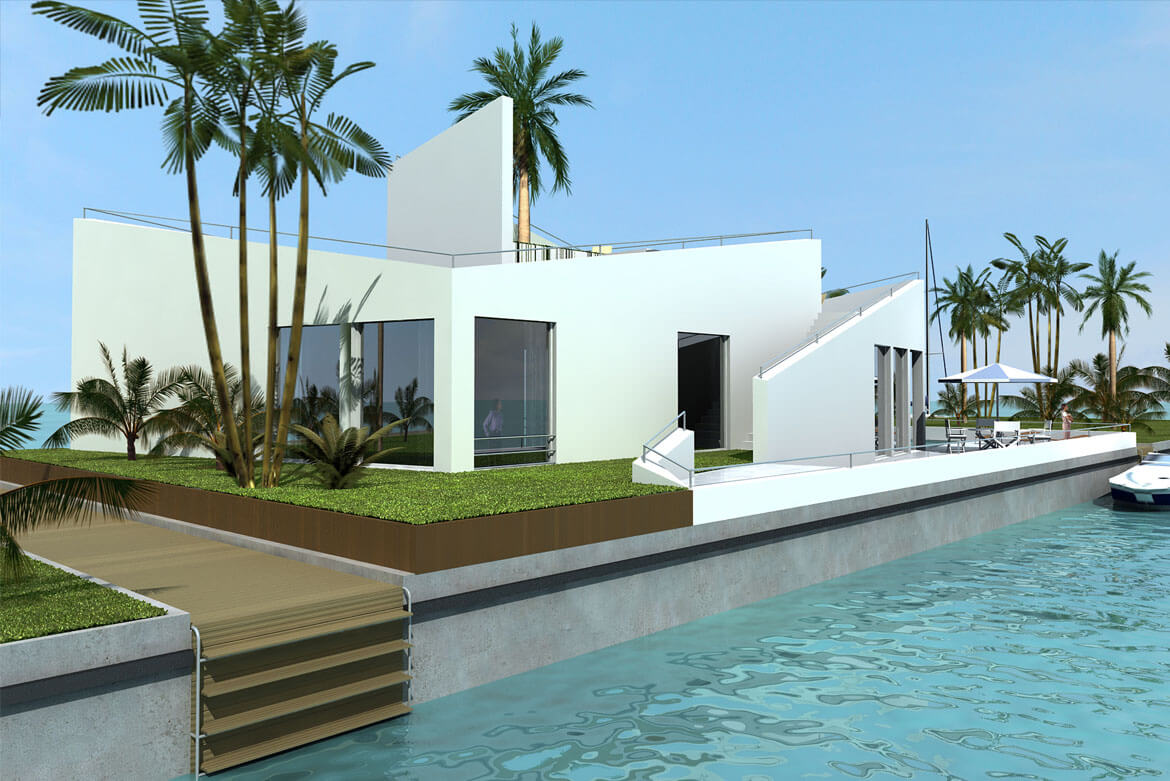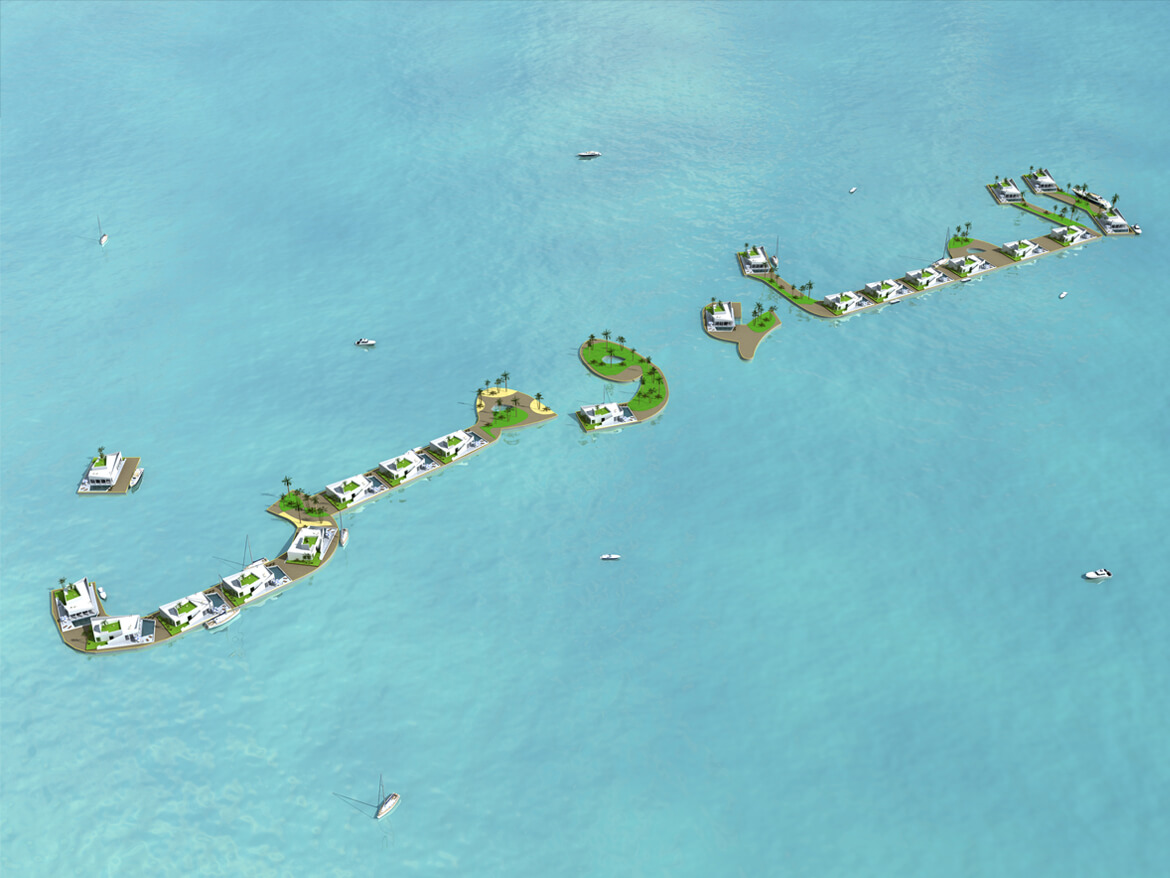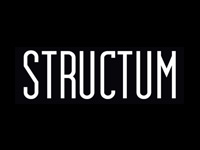Most influential people of the year
TIME Top 100
TIME asked who you thought should be on the list of the 100 most influential people of the year. Koen Olthuis was chosen thanks to his worldwide interest in water developments.
Met dubbel glas is het ook gelukt
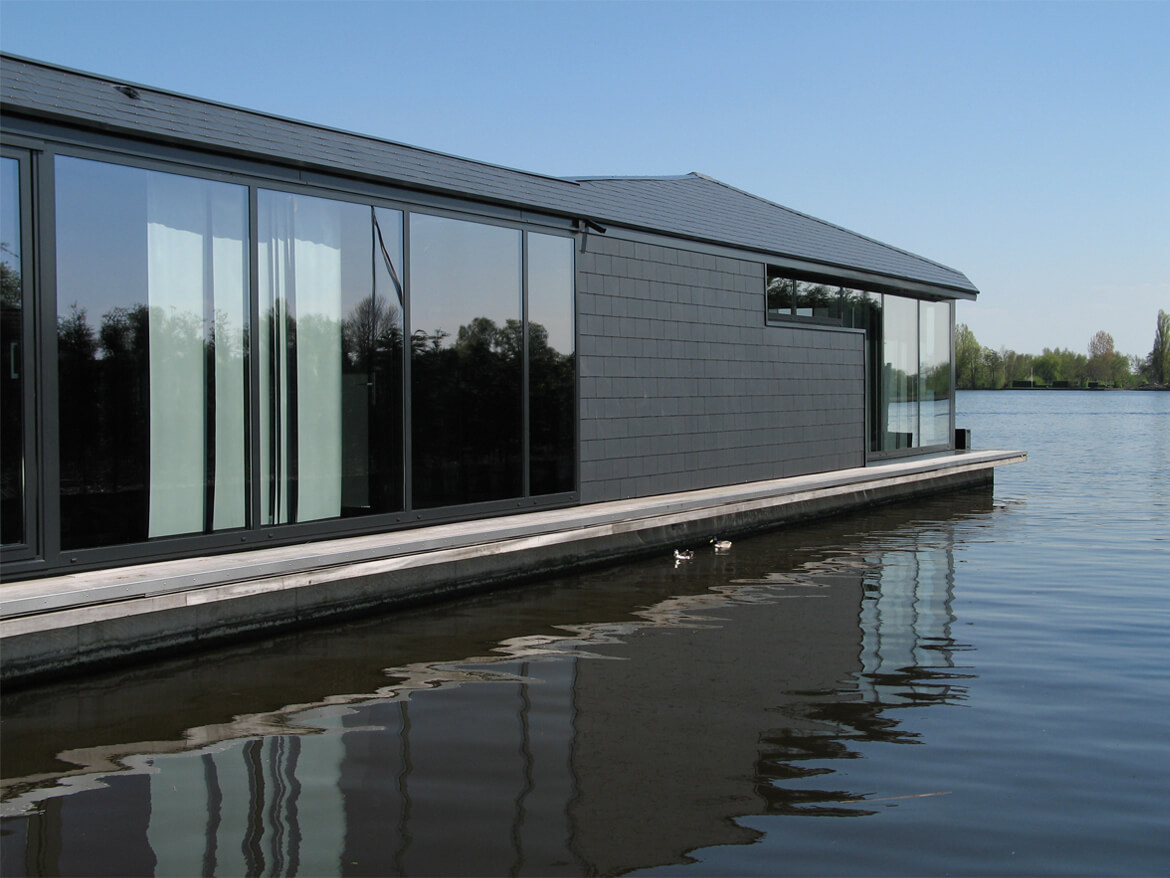
NRC
07-04-2006, NRC
De bouw heeft keuze uit tal van innovatieve systemen en materialen – zoals prefabhuizen en de verfspuit – maar die worden nauwelijks toegepast. “De meeste mensen willen een stenen huis met rode pannen.”
Het had een doorbraak in de schilderswereld moeten worden. Maar het tempo waarin het nieuwe verfspuitsysteem van Sigma Coatings de markt verovert, gaat aanmerkelijk langzamer dan gehoopt. In plaats van de honderd schildersbedrijven waarop Sigma had gerekend, werken er drie jaar na de introductie nog maar veertig bedrijven met de multipainter.
Onwennigheid, meent Sigma. In plaats van met de kwast aan de slag te gaan, moet de schilder de verf verwarmen en met een spuit aanbrengen. Het voordeel: het werk gaat, afhankelijk van het object, tot 30 procent sneller en het resultaat is mooier. Waarom de schilders het spuitsysteem dan toch niet willen? Guus Duray, verkoopleider Nederland van Sigma Coatings: “Ze werken al 2.000 jaar met een kwast.“
Het voorbeeld tekent de bereidheid tot vernieuwing in de bouwwereld. “Bouwers zijn conventionele denkers“, klaagt Duray. “Ze voeren uit wat de architect heeft bedacht en zijn gebonden aan vergunningen, bouwbesluiten en aanbestedingsregels. Dat laat weinig ruimte voor creativiteit.“
Het behoudende imago van de bouw wordt bevestigd door onderzoek van adviesbureau Twynstra The Bridge: 70 procent van de aannemers zou wel willen vernieuwen, maar toch steken bouwbedrijven maar 1 procent van hun omzet in vernieuwingen. Dat zou komen doordat bouwers hun onderaannemers niet aan het lijntje hebben. “Als je als aannemer bijvoorbeeld de hoeveelheid restmateriaal wil terugdringen om kosten te besparen, dan heb je veel partijen nodig om dat voor elkaar te krijgen“, zegt directeur Radboud de Groot van Twynstra The Bridge. “Minder afval vraagt systematischer denken en dus meer opleiding. En vergeet niet dat restanten een secundaire arbeidsvoorwaarde voor de bouwvakker zijn. De directie van het aannemingsbedrijf wil wel van die verliezen af, maar krijgt te maken met morrend personeel. Innovatie is niet altijd een rationeel proces.“
Het ligt ook aan de klant, zegt De Groot. “Prefabhuizen en andere niet-conventionele bouwmethoden slaan bijvoorbeeld niet echt aan in Nederland. Bouwers zijn bereid tot innovatie als het geld oplevert, maar de meeste mensen willen een stenen huis met rode pannen. De bouw is dus noodgedwongen behoudend doordat veranderingen in wonen maar heel beperkt worden geaccepteerd.“
Pim Leemhuis, coördinator kennis van innovatienetwerk PSI Bouw, is wat optimistischer. “Qua nieuwe bouwmethoden en materialen is de bouw wel degelijk innovatief. In beton en verf bijvoorbeeld zijn allerlei vernieuwingen gaande.“
De verhouding tussen opdrachtgevers, bouwers en klanten daarentegen blijft archaïsch, vindt ook Leemhuis. “De houding van de bouw is: u vraagt, wij draaien. De meeste projectontwikkelaars denken op de korte termijn en bouwen omdat er te weinig woningen zijn. Zonder veel visie op hoe de burger over twintig jaar wil wonen.“ Bouwers moeten zich assertiever opstellen richting opdrachtgever, vindt Leemhuis, en niet klakkeloos bouwtekeningen uitvoeren.
Innovatie ontstaat alleen als er behoefte aan is en als er geld mee te verdienen valt, is de overtuiging van De Groot van Twynstra The Bridge. “Noodknoppen in seniorenwoningen zijn inmiddels heel gewoon, omdat de bewoners erom vragen en ook de opdrachtgever van dergelijke woningen, meestal een overheid, er het voordeel van inziet. Dubbel glas is ook zo’n ingeburgerde innovatie die er dankzij de overheid is gekomen.“
Floating homes
4-04-2006, Discovery Channel, Daily Planet
Floating homes
Waterstudio.nl in het Discovery Channel programma Daily Planet
Dutch design lets homes float on the floodwaters
Dutch design lets homes float on the floodwaters
By Matt Bradley, Contributor to The Christian Science Monitor OCTOBER 26, 2005
‘God created the earth,” says an old Dutch saying. “but the Dutch created the Netherlands.” Indeed, precious few nations share the distinction of having forged much of their land from the sea.
After hurricane Katrina flooded the Gulf Coast, many US hydrologists, architects, and city planners looked to “the low countries” for water-wise guidance. But instead of continuing their prohibitively high-cost war against the sea, some Dutch architects are designing ways to live on, instead of fighting against, the rising tide.
Amphibious housing – structures built on land that rise and fall with the water level – is one of several innovative ideas.
Recommended: Could you pass a US citizenship test?
“We have to redefine construction to make it more dynamic and less static,” says architect Koen Olthuis in a phone interview from Waterstudio.NL, an amphibious housing design firm in the Dutch city of Rijswijk. “We call this the ‘resilient sector.’ If a house is resilient, it means there won’t be any damage or loss of value from flooding.”
The Netherlands topography resembles that of New Orleans, only on a far grander scale: Some 26 percent of the country lies below sea level. Much of its land has actually been reclaimed from lakes, bays, and rivers, and is protected by an aging, complex system of dikes (similar to New Orleans levees) and water pumps (think of the famous Dutch windmills).
But after nearly a millennium of digging, pumping, and filling, the Netherlands is still extremely vulnerable to harsh weather and now, to global climate change. As sea levels rise, some experts say it’s high time to make peace with the sea once and for all.
Residents are already moving into the first development of “amphibious” and floating houses on the banks of the Meuse River in Maasbommel, about 100 miles southeast of Amsterdam. When it is completed in January or February, the development (built by Dutch construction company Dura Vermeer and designed by architect Ger Kengen) will include 15 floating and 34 amphibious homes.
Whereas classic construction techniques in the Netherlands rely on underground concrete pilings to support structures in the spongy soil, an amphibious house comes with foam built into a hollow concrete basement.
When the water rises or falls, the houses float to up to 18 feet above ground by sliding along two mooring poles at the front and rear of the buildings. With the help of flexible PVC piping, the plumbing, electrical, and natural gas connections can go along for the ride.
The floating houses – similar to houseboats – manage rising and falling water levels in much the same way, but are built to float year-round, no matter what the weather.
“There will be a lot of turbulence,” says Dick van Gooswilligen, Dura Vermeer’s spokesman. “But on the other hand, the house is connected to the two mooring poles which would keep the house stable. So you would feel the waves, but it wouldn’t be extreme.”
While flooding is a perennial issue, the Netherlands rarely finds itself in the path of truly rough weather.
The new amphibious and floating houses are not built to withstand hurricanes or typhoons, but Mr. Olthuis’s designs present nearly the same structural challenges as their land-lubbing relatives: Both need extra fortifications to withstand high winds.
Wetter winters and drier summers will make for unpredictable water levels in large parts of the Netherlands. Some 1.2 million acres of dry land will need to be reallocated as flooding zones in the next 50 years, according to government calculations. The Dutch Ministry of Water Management and Traffic has designated 15 areas where Mr. van Gooswilligen expects to someday see homes, businesses, and even agriculture bobbing placidly on the waves.
The new community at Maasbommel includes the world’s first floating greenhouse.
“They have been talking for years about building on and around water,” says van Gooswilligen. “And we said, ‘Stop talking. Don’t tell them, show them that it’s technically possible to build houses that are waterproof and safe.’ ”
Understandably, the act of building in flood zones raised a few eyebrows, even among the water-savvy Dutch. Before it became a testing ground for revolutionary architectural methods, Maasbommel had seen two floods in 1995 and 1997 that devastated what was once a riverside recreational park. The massive property damage made authorities reluctant to re-develop the area. Van Gooswilligen says that while the first project is small and experimental, he expects many more to come.
“It’s no longer going to be developments with 49 houses and one greenhouse,” he says. “Everyone’s going to have to take a step forward, and we’re going to build in a different way.”
Despite its unusual “resilient” construction, a well-designed, inland amphibious building can blend in with a surrounding neighborhood’s architectural style.
“If you’re walking through Amsterdam, you can’t see that the city is built on hundreds and hundreds of [underground] piles,” says Olthuis. “We can build in a floating way, so people walking through Amsterdam won’t see any difference.”
Camouflaging the flood-proof buildings would mean outfitting the old “polder” system of concrete pilings with amphibious technology. Such a strategy might also help save Venice’s rapidly sinking skyline.
The amphibious technique lends itself primarily to new construction. Flood-proofing older buildings might be prohibitively expensive, Olthuis says. The new flood-proof design, however, spares the builder significant waterproofing expenses required by law in many Dutch communities.
City planners are not only racing against the rising tides. Rapid urbanization and massive population growth may force a massive exodus onto the water, designers say.
“We feel that in order to cope in 2050, with 9 billion people on Earth, you need to take into account this opportunity to provide people with basic elements needed to sustain life,” says Frits Schoute, a retired Dutch engineering professor who is now devoting his time to his dream of living on the sea. (Dr. Schoute’s designs can be found on his website, www.ecoboot.nl.)
One of Schoutte’s designs features dampers that would not only protect floating houses from waves, but would also act as generators to exploit the tides for electrical energy. Based on his preliminary calculations, wave dampers could provide more than enough electricity to live indefinitely on one of Schoutte’s “ecoboats,” he says.
As for the commercial success of amphibious and floating houses, Olthuis cites one persistent truth: Coastal views have always commanded premium prices.
Next November, Olthuis and his firm plan to present designs for a 400-foot-tall floating hotel in Dubai on the Persian Gulf, a city that frequently courts innovative (sometimes outlandish) design solutions.
The circular hotel, which will sit only 12 to 16 feet deep, will rotate every six hours to offer guests unobstructed views of the city’s arresting skyline.
“It’s spectacular,” Olthuis says. “I think we’re only on the first step with these innovative possibilities of living on or next to the water. We all say here, the future is wet, and the future is great.”
Zaluma yra gerai, bet vandens zydryne-dar geriau
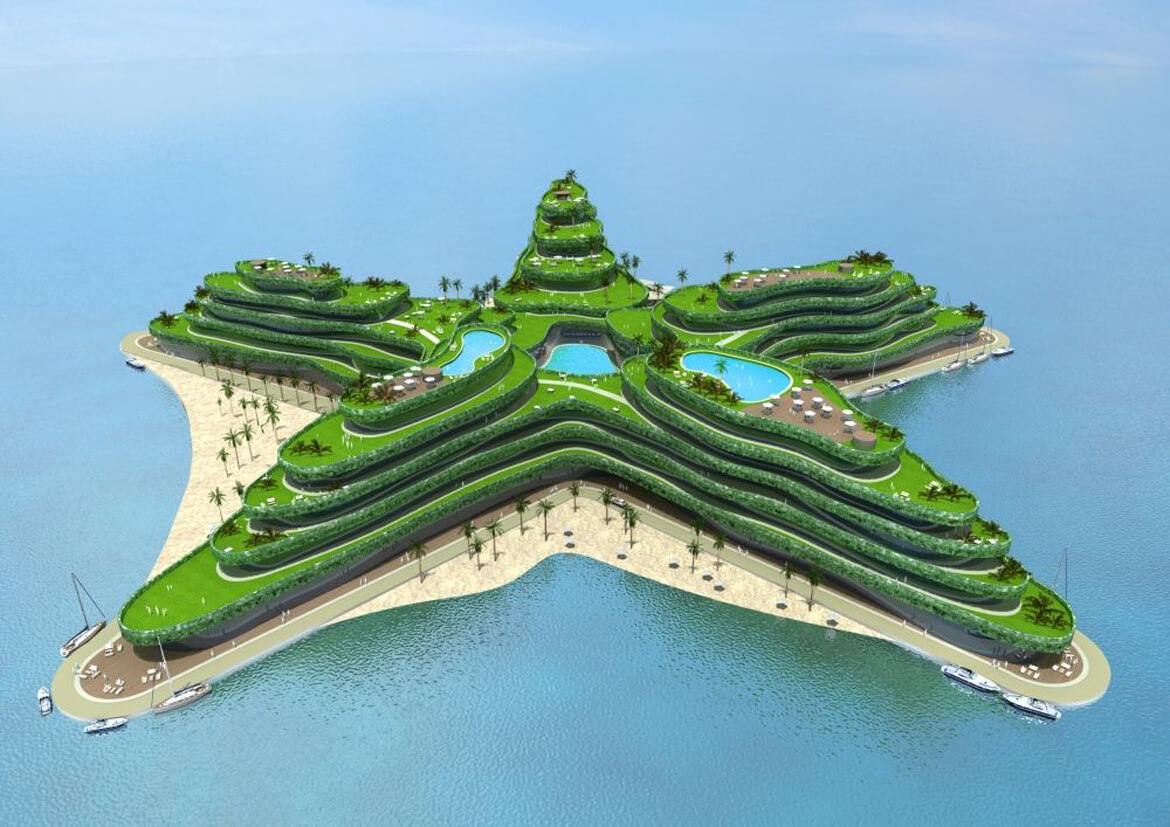


June 2014
Structum, Jurgita Siliuniene
Architektūriniai sprendimai ant vandens nėra įprasti ir kasdieniški, tad kokios klientų ir kolegų reakcijos sulaukia jūsų projektai?
Gyvename laikais, kai technologiškai beveik viskas yra įmanoma. Mes naudojame įprastas ir laiko patikrintas technologijas, kurios jau seniai taikomos projektuojant plūduriuojančias naftos platformas ar didelius kruizinius laivus.
Didžiausias iššūkis, su kuriuo susiduriame šiandien, – tai žmonių, tiek klientų, tiek valstybinių institucijų, mąstymas ir supratimas apie gyvenimą ant vandens. Manau, kad ateityje plaukiojantys pastatai ar net plaukiojantys miestai bus kasdienybė ir nedaug skirsis nuo įprastų miestų, prie kokių esame įpratę šiandien.
Žinoma, taip pat svarbu užtikrinti, kad plaukiojantys pastatai turėtų tą patį komforto lygį ir kainuotų tiek pat, kaip ir pastatai ant žemės. Vienintelis tokių architektūrinių sprendimų skirtumas – plūduriuojantis pagrindas, sudarytas iš plūduriuojančių platformų junginio, kurį prireikus galima praplėsti, prijungiant papildomas platformas. Tai mes vadiname „City apps“ – plūduriuojančių miestų komponentais. Tai gali būti papildomas stadionas, golfo aikštynas, naujas namų kvartalas arba nauji keliai.
Naudojant „City apps“ plaukiojantį miestą galima transformuoti ir pritaikyti pagal gyventojų poreikius. Tokie architektūriniai sprendimai labai tinka prie vandens įsikūrusioms bendruomenėms, yra mėgstami salynų kurortuose, be to, tai puiki galimybė tankiai apgyvendintoms teritorijoms, pavyzdžiui, Kinijoje.
Kokia buvo jūsų idėjos įgyvendinimo pradžia?
Jaunystėje mane labai žavėjo Olandijos kraštovaizdis, šalies vandens ir žemės struktūra. Tuo metu gyvenimas ant vandens buvo įmanomas tik specialiai tam pritaikytuose laivuose. Taigi siekdamas įgyvendinti savo idėją – apgyvendinti žmones ant vandens – 2002 m. pabaigoje įkūriau pirmąją pasaulyje miestų ant vandens architektūros įmonę „Waterstudio.NL“.
Esu šios rinkos pradininkas, tad teko įdėti nemažai pastangų, norint pakeisti plačiosios visuomenės suvokimą apie gyvenimą ant vandens.
Ar gyvenimas ant vandens turi tradicijų?
Olandijoje žmonės ant vandens gyvena jau daugiau nei 100 metų – čia yra įprastų laivinių namų, kurie plaukioja upėmis, miestų kanalais.
Kuo skiriasi architektūra ant žemės ir ant vandens?
Vienintelis dalykas, kuris skiriasi nuo sausumos, – plūduriuojantis pagrindas. Taip pat, jei namai statomi ant jūros paviršiaus, naudojamos sūriam vandeniui atsparios medžiagos.
Kiek ir kokių projektų esate įgyvendinęs?
Įgyvendiname savo sprendimus visame pasaulyje – Maldyvuose, JAV, Indijoje. Nyderlanduose jau pastatėme daugiau nei šimtą plūduriuojančių namų ir pastatų. Šiuo metu įgyvendiname ypatingą projektą – nedidelio biudžeto būsto sprendinius lūšnynų bendruomenėms.
Milijonai žmonių gyvena lūšnynuose prie vandens, jiems kyla nuolatinė potvynių ir cunamių grėsmė, tad mūsų tikslas, naudojant plaukiojančių namų architektūrinius sprendimus, padėti žmonėms susikurti tokį būstą, kuris nebūtų suniokojamas gamtos stichijų.
Tačiau ar saugus toks būstas ant vandens, ypač turint omenyje , kad jūros lygis kyla?
Taip, kai kyla jūros lygis, saugiausia vieta ir yra ant vandens.
Kokią įtaką miestai ant vandens turės architektūros tradicijoms?
Tai niekaip nepakeis pačios architektūros, tik pakeis mūsų mąstymą apie miestus, gyvenamąjį ar pramoninį būstą.
Šiuolaikiniai dizaineriai yra klimato kaitos karta, tad turėtų pradėti mąstyti apie dinamiškas, o ne statiškas statybų konstrukcijas.
Ar ši architektūra yra nekenksminga gamtai?
Mums labai svarbus ekologinis tvarumas. Ant vandens galime išgauti tvarią saulės energiją, be to, nenaudojamus namus lengva perkelti į kitą vietą. Palyginkite – ant žemės stovintys nenaudojami, griūvantys pastatai metų metus niekieno neprižiūrimi darko kraštovaizdį ar miesto architektūrą.
Vanduo mums suteikia unikalią galimybę kurti tvarias technologijas, taigi žaluma yra gerai, bet vandens žydrynė – dar geriau!

